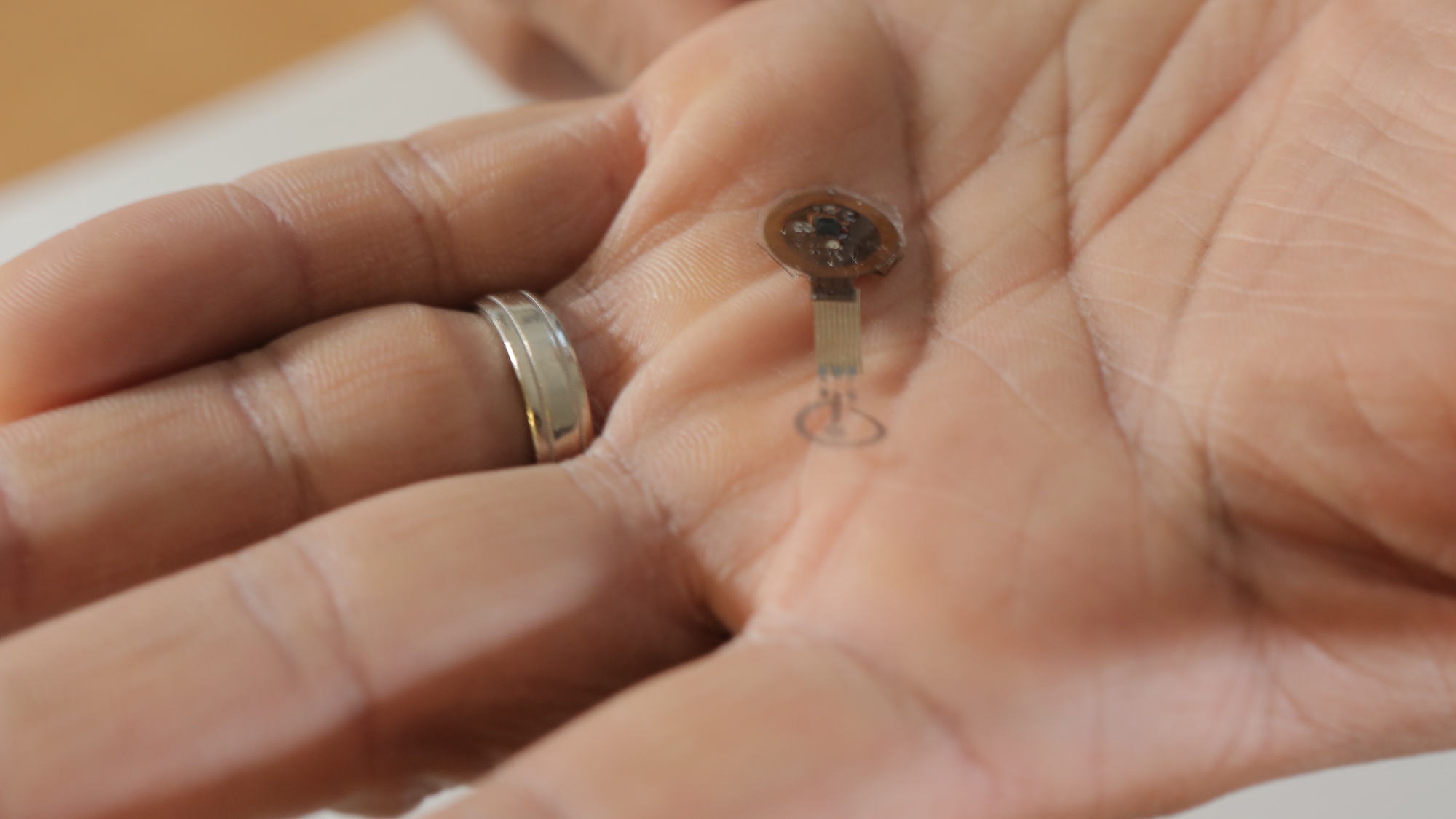

We’re used to slapping Band-Aids or gauze on cuts and other gashes, but researchers are exploring higher-tech ideas, too. Micro-thin smart bandages show promise as a potential new method of medical treatment for patients suffering from chronic wounds such as diabetic ulcers. Like some of the tech that has preceded it, the latest iteration leverages electrotherapy to speed up healing time, but goes one step further—it’s capable of safely biodegrading once its task is complete.
Developed by researchers at Northwestern University and detailed in a study published this week with Science Advances, the project’s testing—so far, just in mice—has resulted in the first electrotherapy-delivering bioresorbable bandage, as well as the first example of a smart regenerative system.
[Related: A micro-thin smart bandage can quickly heal and monitor wounds.]
Between 15 and 20 percent of diabetes patients will develop an ulcer at some point in their lives. These injuries often go unnoticed due to diabetically induced nerve damage, and are slow to heal due to decreased blood circulation. The longer these wounds remain open or partially healed, the more likely they are to develop serious, sometimes life-threatening complications and infections.
To help cope with this, electrotherapy is a method of stimulating the healing process by attracting new blood flow toward a wound, but the treatment’s required tools and medical instruments have long been bulky, wired (because there needs to be a source for the electricity), and limited to monitored hospital settings. Smart electric bandages could one day soon provide an alternative, saving patients time, money, and lengthy doctor visits.
Here’s how it works: The new, flexible bandage encompasses the site of a wound, and features electrodes on both sides of the material. The inner face includes one electrode that sits atop the injury itself, while its ring-shaped partner surrounds the wound. The other side, meanwhile, hosts a coil to harvest power alongside a near-field communication (NFC) system to wirelessly transmit data. As electric currents ideally help the healing process, additional sensors keep an eye on the progress, and can alert doctors if there are any issues or complications.
[Related: This vibrating magnetic pill could one day help measure your guts.]
During the development stages, the team realized that electrodes made from incredibly thin layers of the metal molybdenum can safely biodegrade over time without impeding the healing process. In their studies on applying the new bandages to mice with diabetic ulcers, the team saw that most of the metal can be absorbed into the rodents within six months, with extremely little accumulation in any of the test animals’ organs. What’s more, healing times increased as much as 30 percent from as little as 30 minutes per day of electrotherapy stimulation.
Once larger animal testing is completed, the team hopes to move onto human trials. Because no drugs or controlled materials are included in the system, it’s possible that the bandage could move into the public sector much sooner than other treatment options needing FDA approval.